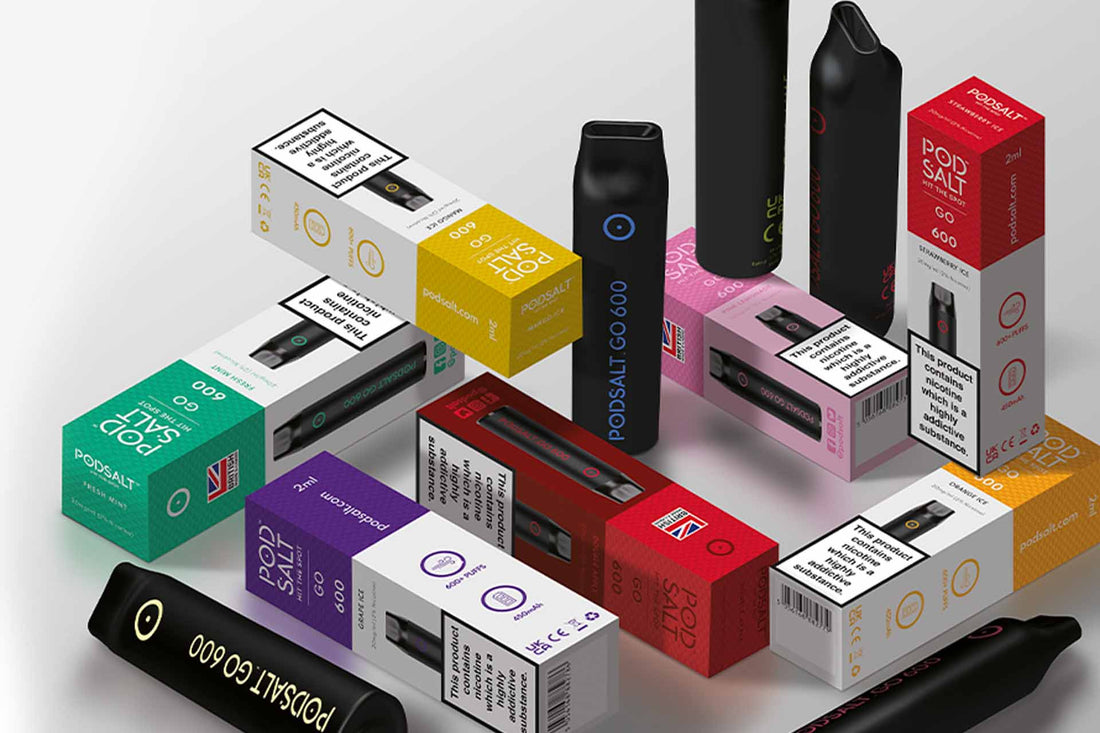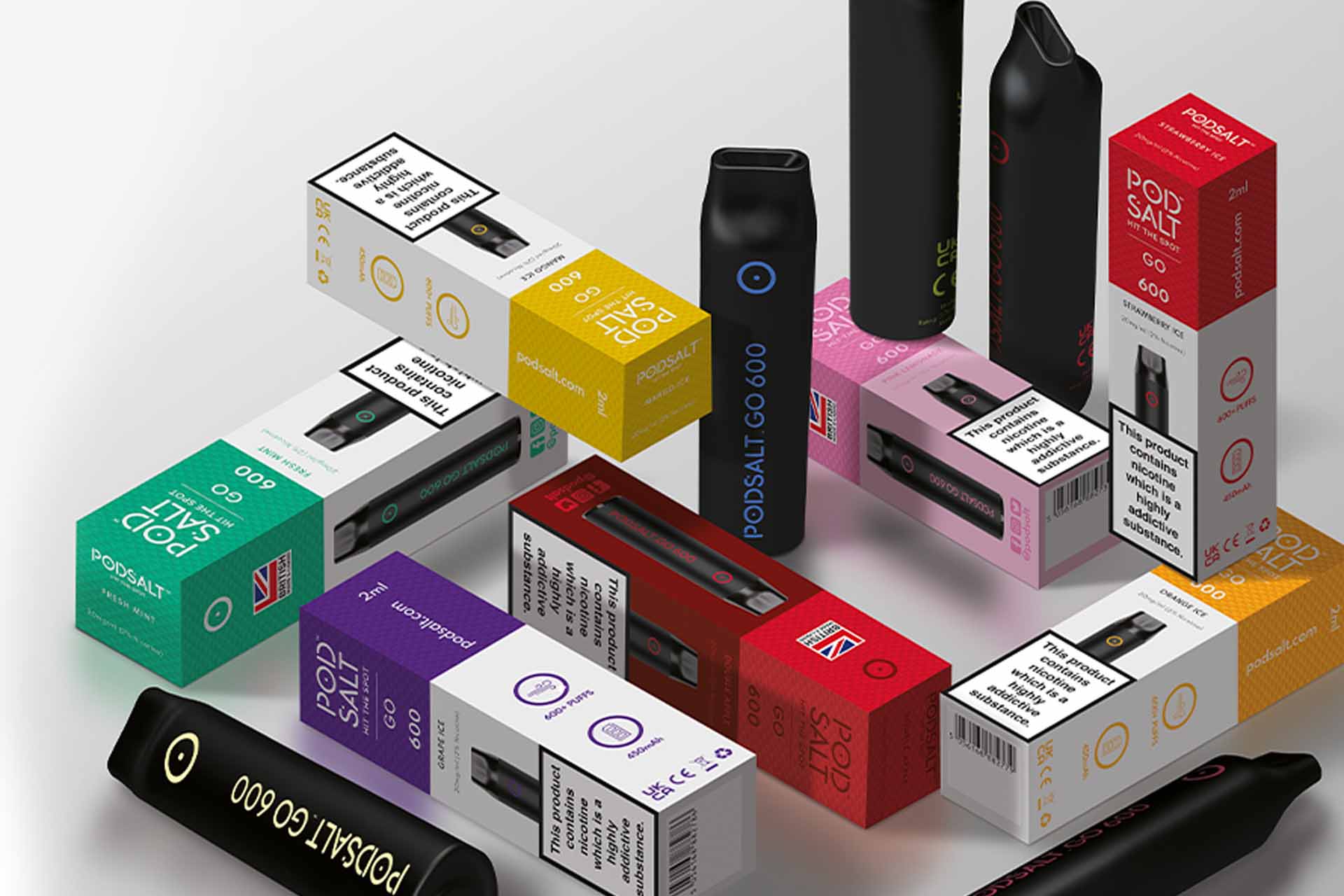
Whether you're simply curious or looking to make the switch to vaping, we take a look at what makes up an E-Cig and how they work. E-Cigarettes have quickly grown in popularity, so much so that there are many more iterations of them than since their initial inception in 2003.
What is an E-Cigarette?
E-Cigarettes are electronic devices used to vaporise E-Liquid. These were created as an alternative to smoking, delivering nicotine via vapour inhalation, rather than the much more harmful smoke inhalation from cigarettes. Cigarette smoke contains thousands of harmful carcinogenic chemicals that can result in numerous health issues including cancer. And this is not just limited to the person smoking; those who inhale second-hand smoke as a by-product of someone smoking around them, also inhale these harmful carcinogens.
E-Cigarettes however are battery-powered devices that do not contain any of the harmful chemicals associated with smoking-related diseases, due to the lack of producing these harmful carcinogens such as carbon monoxide and tar.
There are many claims that vaping and E-Cigarettes are a great way for helping smokers quit by offering a similar experience to traditional cigarettes. In the UK, the NHS and many of our governing bodies back vaping as a less harmful alternative to smoking, and therefore back E-Cigarettes for use as a quit-smoking aid alongside other NRTs (Nicotine Replacement Therapy).
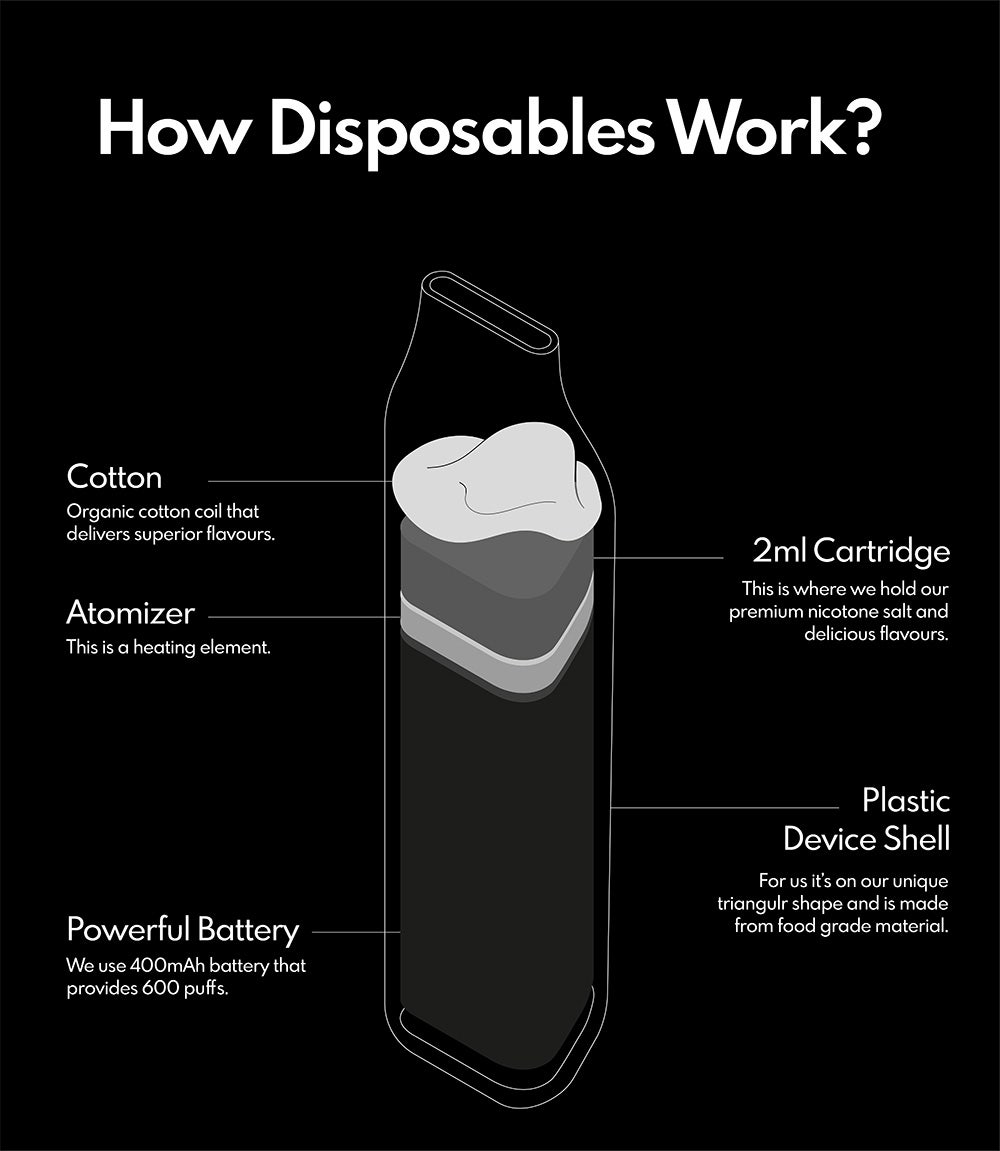
How E-Cigarettes work
These devices work simply by turning a liquid that contains nicotine (E-Liquid) into a vapour that can then be inhaled. E-Liquid is made up predominantly of PG (Propylene Glycol) and VG (Vegetable glycerine), and then has flavourings and nicotine added ‚– although there are some E-Liquids that contain no nicotine. All ingredients used in vape juice must be food-safe and is highly regulated in the UK to ensure no harmful/illegal ingredients are used. Depending on the device, you may only have to inhale on the device to activate it, or in some cases, press a button to fire up the device.
Once the device fires up an electrical current is passed through the heating element to vaporise the E-Liquid in contact with it. This then passes up through the atomiser and mouthpiece to be inhaled. There are two methods for vaping: DTL (Direct-to-Lung) and MTL (Mouth-to-Lung), depending on which type of device you have will mean you either hold the vapour in your mouth before opening your mouth and inhaling the vapour then exhale, or directly inhaling the vapour before exhaling.
E-Cigarettes work with a lot of variables including air intake, airflow, wattage, resistance and more, all of which provide different vaping experiences. For example, an E-Cigarette with a higher wattage but low resistance is likely to create bigger clouds and stronger flavours due to it vaporising more E-Liquid in one puff. Devices with a tighter airflow have a much more restricted draw making them more similar to the sensation of smoking a cigarette.
Different elements of an E-Cigarette ‚– What makes up an E-Cigarette?
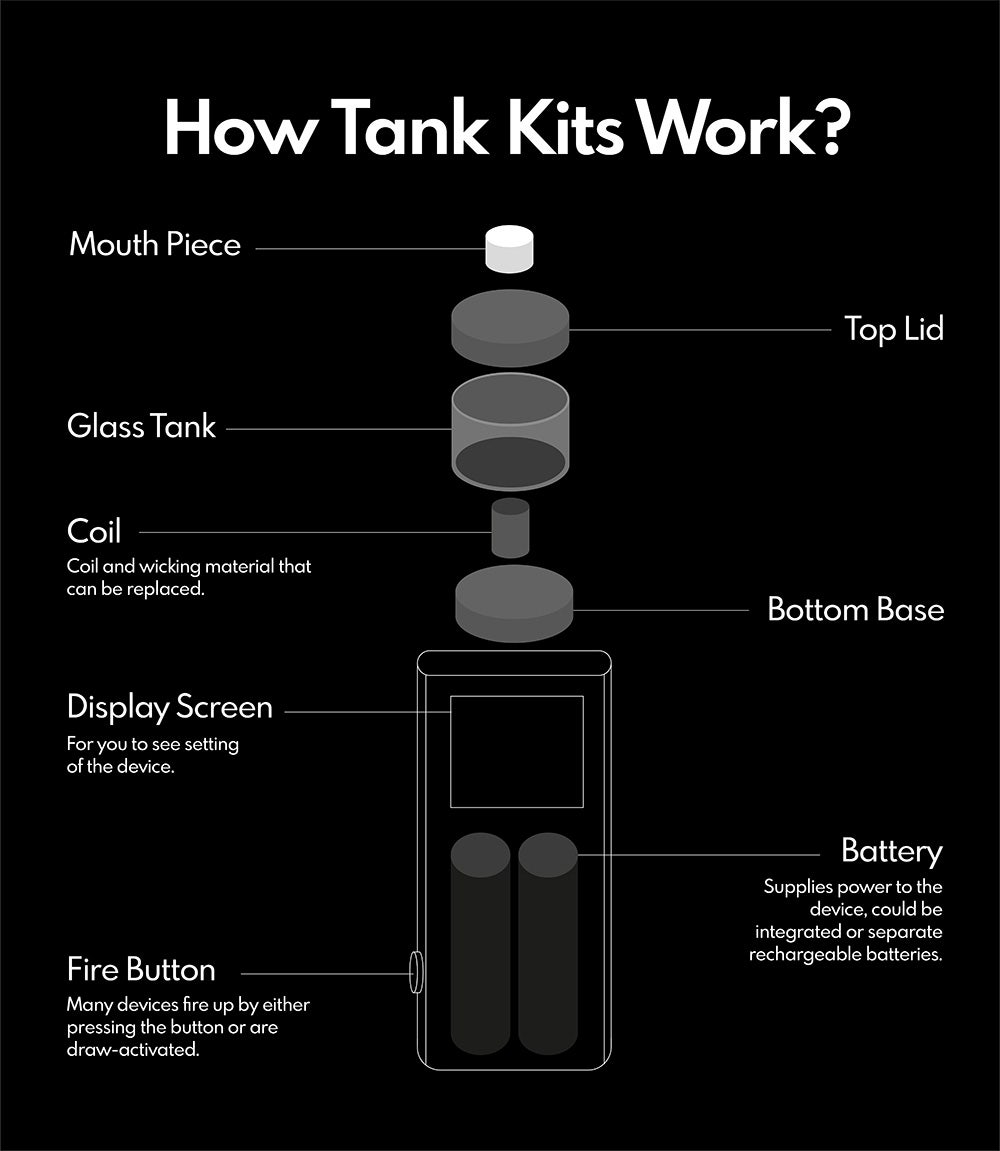
Battery
Most E-Cigarettes contain lithium-ion batteries that are often rechargeable ‚– other than disposable vape devices. These sorts of batteries are widely used in much of our current technology such as wireless devices and laptops and are not recyclable. The capacity of a battery is measured in mAh (milliampere-hours), therefore the higher the mAh value. The longer a battery can last depends on the resistance of your coil and your wattage. Like other battery containing devices, there is a risk of fire involved.
To minimise the risk, spare batteries should be carried in a case and not loose in your pocket ‚– if they meet a metal object such as house keys or coins, they can discharge electricity and catch fire. If your batteries are rechargeable, you should only ever use the correct charger for them ‚– if they are not described as rechargeable batteries, you should never attempt to recharge them. Batteries should also have an intact wrap around them, any damage to the wrap exposing the battery tube can lead to venting issues and is extremely important to keep on top of.
Many accidents with vape kits/batteries exploding or causing fires are caused by users modifying their devices without a proper understanding of power and Ohms law. Some also occur due to using a charger that is not official or designed to work with their kit. This commonly happens with in-experienced users attempting mechanic mods however experienced users, with a proper understanding of battery safety, minimise the risk.
Heating element/Coil
One of the main parts of an E-Cigarette that makes it what it is, is the coil and vaporising chamber. It is here where the E-Liquid becomes vapour for you to inhale. The unit contains the coil ‚– a metal heating element that comes in different shapes such as a coiled wire, or a small sheet of metal mesh that heats up when an electric current passes through. They also contain a wicking material that runs through the coil, allowing the E-Liquid to be fed to the coil.
Many E-Cigarettes require you to replace your coils every so often which can be done easily enough with the pre-built stock coils available on the market. But there are some vapers who prefer to build their own kits with rebuildable coils. There are a variety of coils available categorised by the different materials they are made from such as: stainless steel, nickel or titanium. Each have their own benefits of temperatures and wattage tolerances.
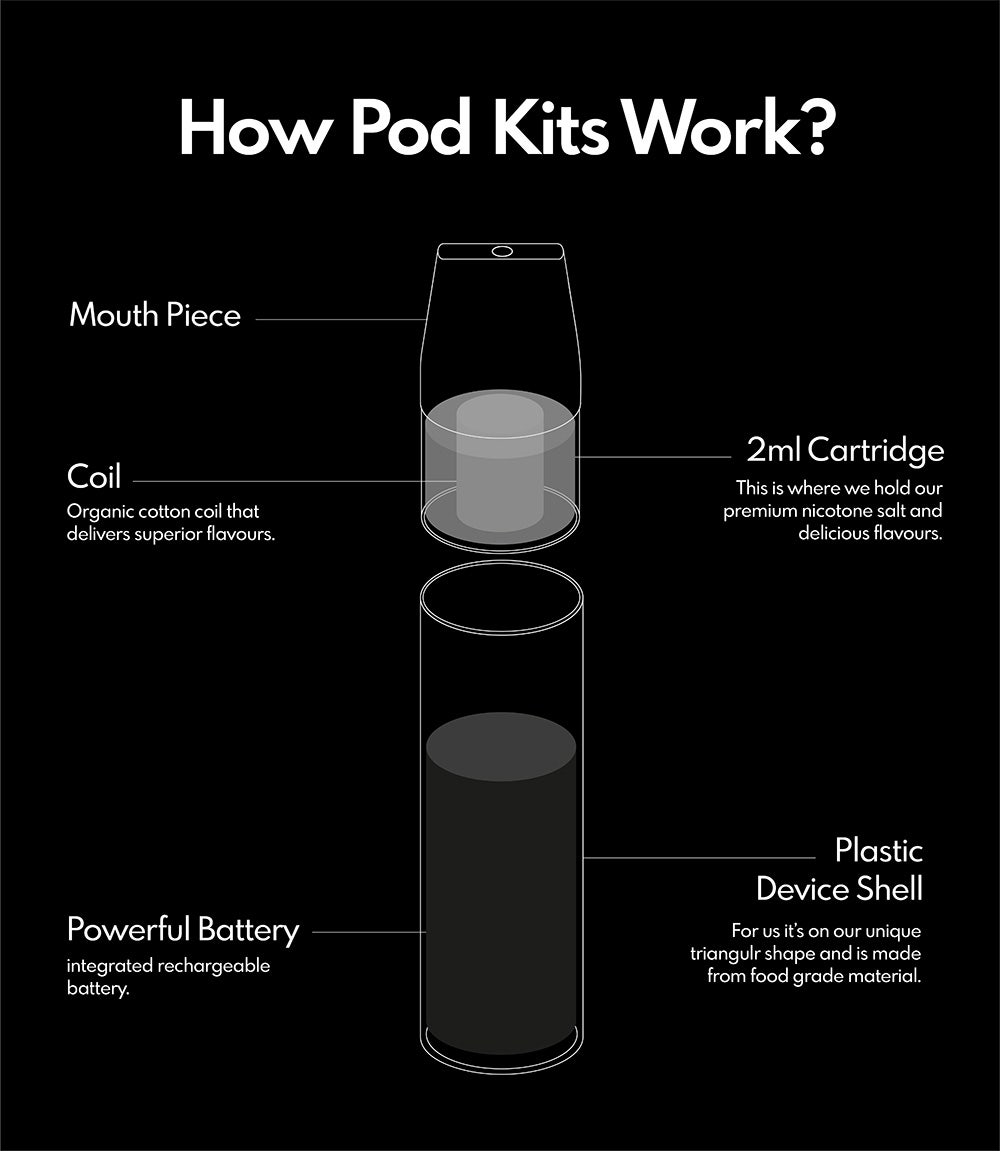
Tank/Pod
E-Cigarettes also include a storage section for your E-Liquid which, in most devices, can be refilled (other than disposable vapes). Depending on your device this could be either a tank or pod. Tanks can also be known as cartomisers or clearomisers. There are also more advanced versions such as RDA, RTA and RDTA ‚– there's so much to talk about with these that we'll do a separate article on these!
A Cartomiser is of a similar design but it has a polyfill material wrapped around the heating element. They often hold larger volumes of E-Liquid and the polyfill material helps to extend the life of your E-Liquid ‚– but it can lead to previous flavours lingering.
A Clearomiser is designed in a similar fashion but is usually made with transparent plastic or glass so you can see how much E-Liquid is inside. These include coils that are easily replaced and can also be positioned differently inside the tank.
Pods are commonly found in simple E-Cigarettes such as Cig-alikes and pod kits. These cartridges slot into your E-Cigarette to feed E-Liquid into your device. Most of these even include the coil pre-built into the pod. Once the pod is empty they are usually disposed of but there are some refillable options available.
In general, E-Cigarettes can be as simple or as complex as you choose. For those looking for a simpler method to vape, disposable vapes and pod kits are a great introduction to vaping. Those looking to get creative with their vapes and really customise their vaping experience are more likely to benefit from mod kits.

